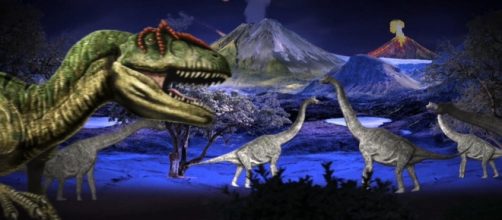The dinosaur family tree is rearranged as a new study proposes they began far earlier than we thought. The study is published in the “Cosmos Magazine.” It reveals the last of non-avian dinosaurs went extinct 54 million years ago. Luis Alvarez, a physicist at the University of Glasgow, discovers a thick layer of iridium-enriched clay at the K-T boundary. He says most of the dinosaur fossils are present in Canada and the US. Iridium is more common in space than on our Earth. Experts believe the thin layers of iridium were deposited following the impact of a large comet.
The collision of a comet with our planet caused the extinction of dinosaurs.
Why did dinosaurs disappear?
The end of the Cretaceous and the beginning of the Paleogene has been a scientific mystery. During the Palegogen period, dinosaurs relied on large animals and small plants for their diet. They could not tolerate the sudden environmental changes. In contrast, most mammals, turtles, crocodiles, salamanders, and frogs of that period are present today. Even some plants, snails, bivalves, starfish, and sea urchins of that time are present today. Luis Alvarez aims to find out whether dinosaurs vanished due to a comet or a massive bout of volcanism. He will soon launch a project on dinosaur extinction with Morgan Roberts, a geologist at the University of Oxford.
Many families of brachiopods and sea sponges exist today. Luis Alvarez says more than half of the world’s species have disappeared, including dinosaurs.
The extraterrestrial theory
Luis Alvarez is interested to discover rocks where the dinosaur fossils are present in large numbers. The extraterrestrial theory stems from the discovery that several rocks dated to the extinction event of dinosaurs. The fossils are present in the iridium rocks. Such rocks are found both in Canada and the US. Alvarez will take time before he publishes the findings. He aims to find out the characteristics of soil. Both Luis and Morgan postulate that the iridium was scattered worldwide when a comet struck on Earth. A 210-mile-wide crater carved out of Mexico's Yucatán Peninsula, called Chicxulub, has been found and dates to 65 million years ago.
Scientists believe this could be the origin of dinosaurs. Morgan says that dinosaurs possibly existed in this a part of the world. He is collecting the soil samples from the area. He will soon find out what caused mammals to diversify and evolve into newly opened niches.
The new family tree of Morgan and Luis is informative and better than the previous one, according to Matt Baron at the University of Cambridge. He funds their project, and the findings will be published in the journal “Nature.”

